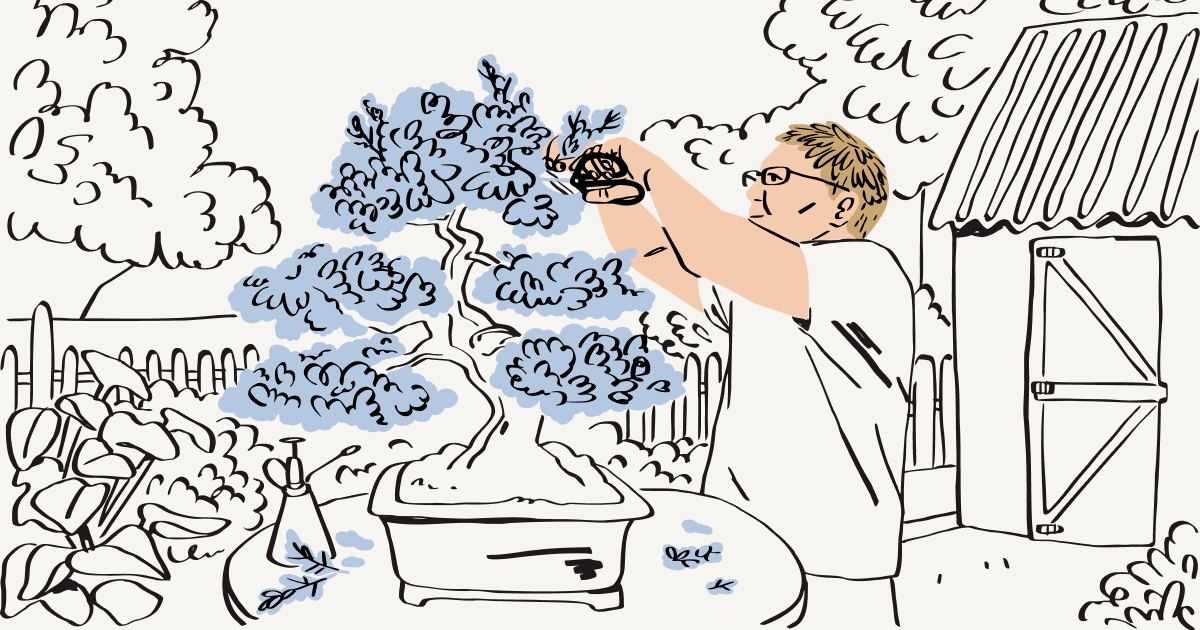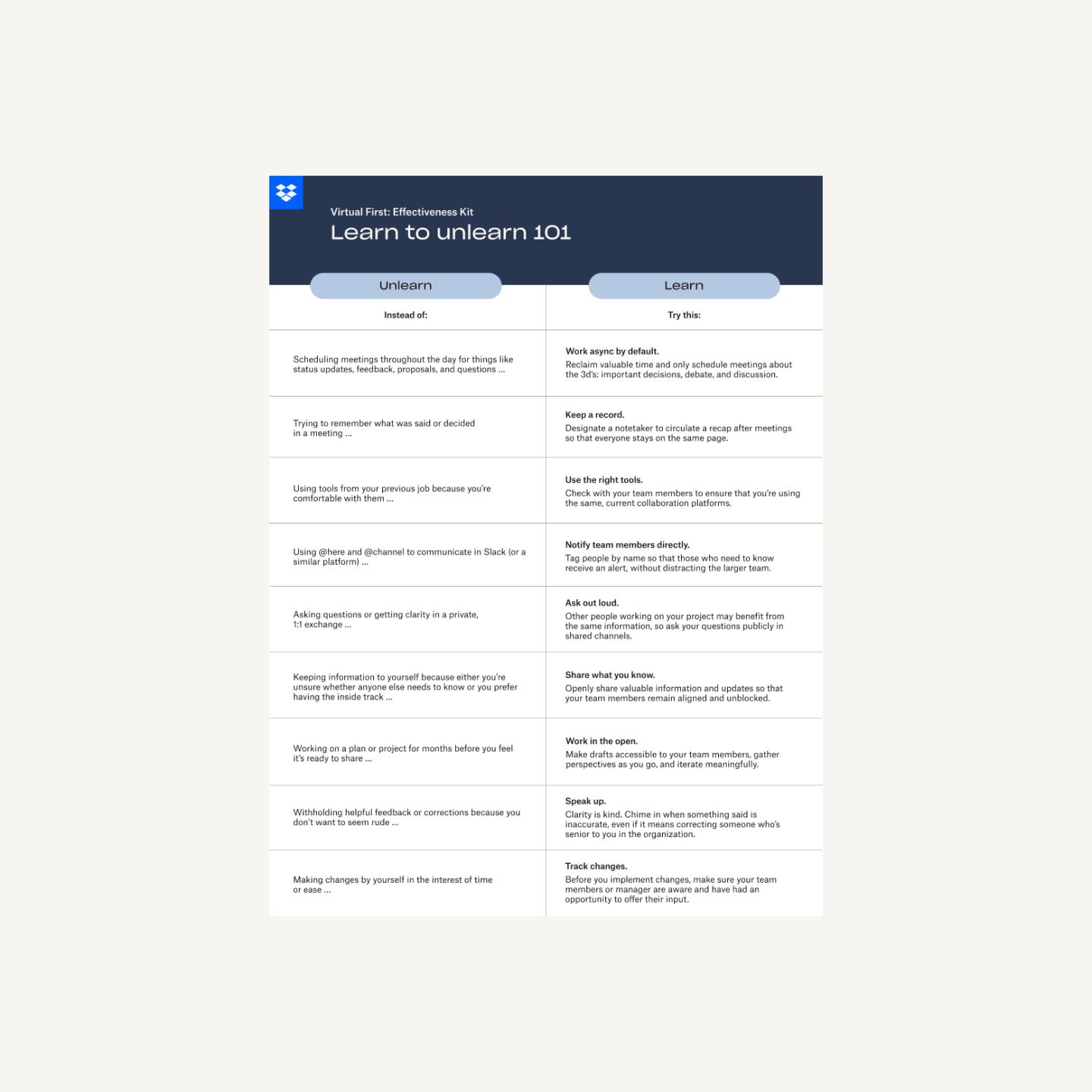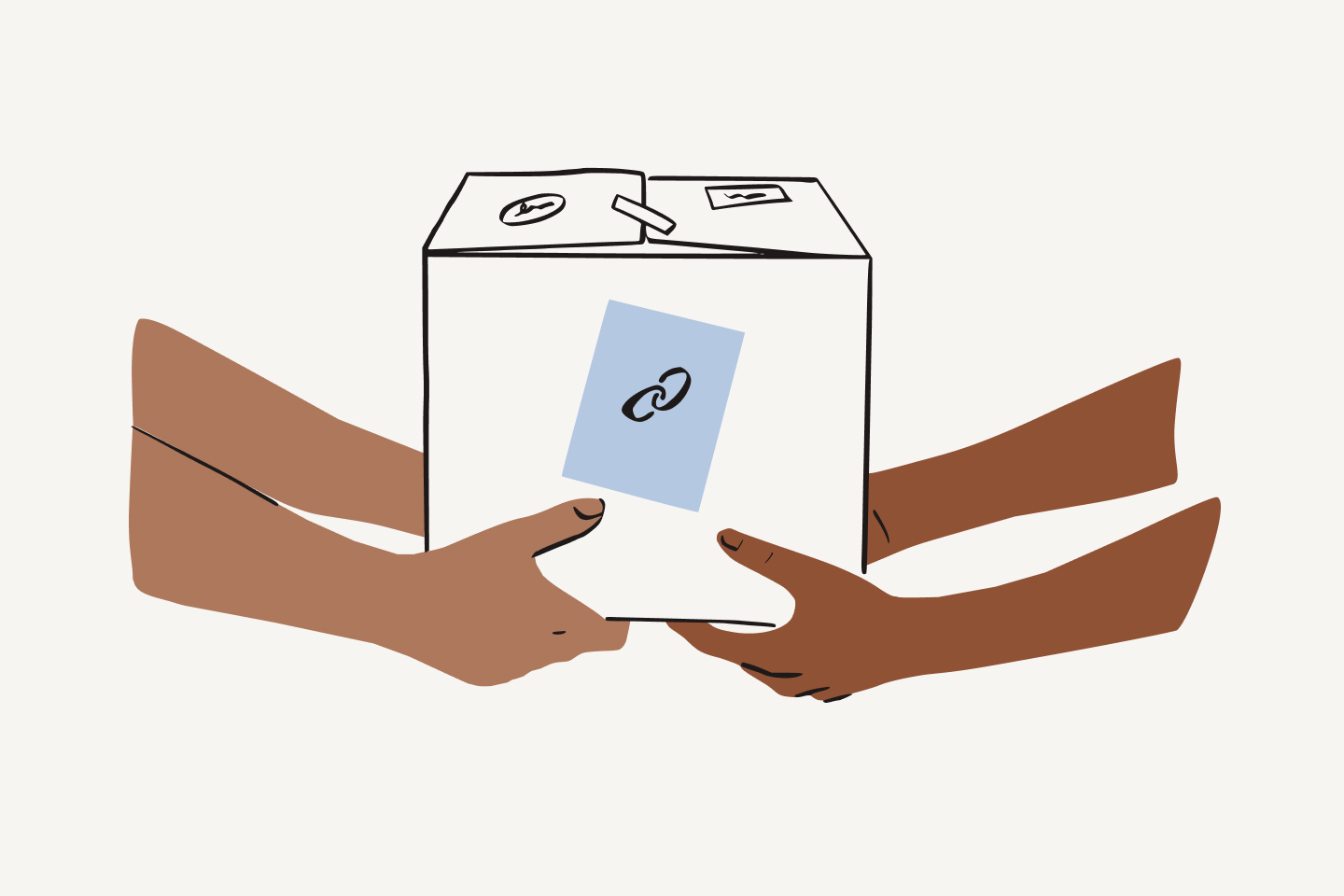Step 1: Embrace a new day
Since the shift to remote work, we occasionally hear about “going back”: back to the office, back to normal, back to some old way of working. But the future isn’t a return to anything—and it won’t look like yesterday.
When things change quickly, it’s normal to dig in your heels and stick with what you know. But this leaves little room for innovation or inspiration. That’s why the things you unlearn are just as important as the things you learn. Unlearning is the practice of consciously and continually evaluating your mindset, approaches, and ways of working in order to identify habits that have become ineffective or problematic.
The first step of unlearning is to acknowledge that circumstances have changed and you may need to change, too. Get yourself in the right headspace to do some mental “spring cleaning,” and keep an open mind about which habits should stay and which should go.



